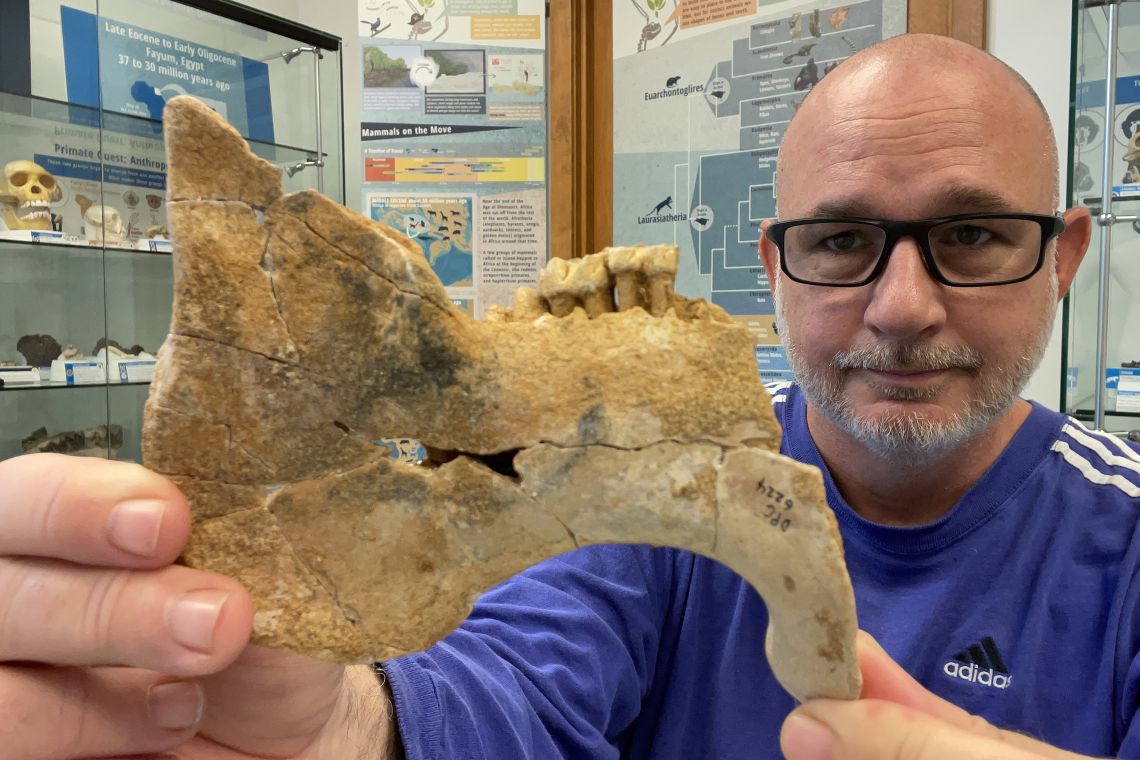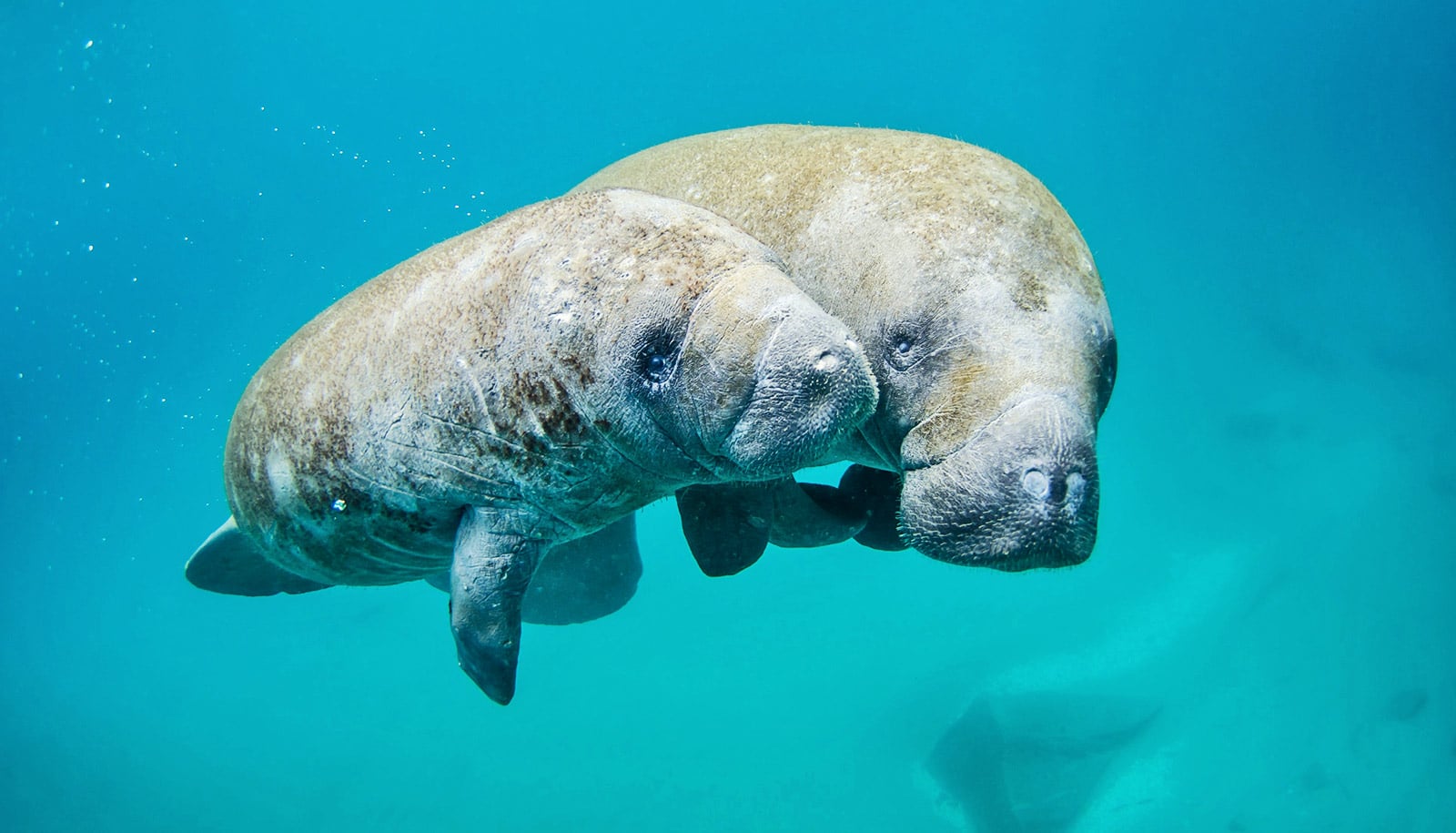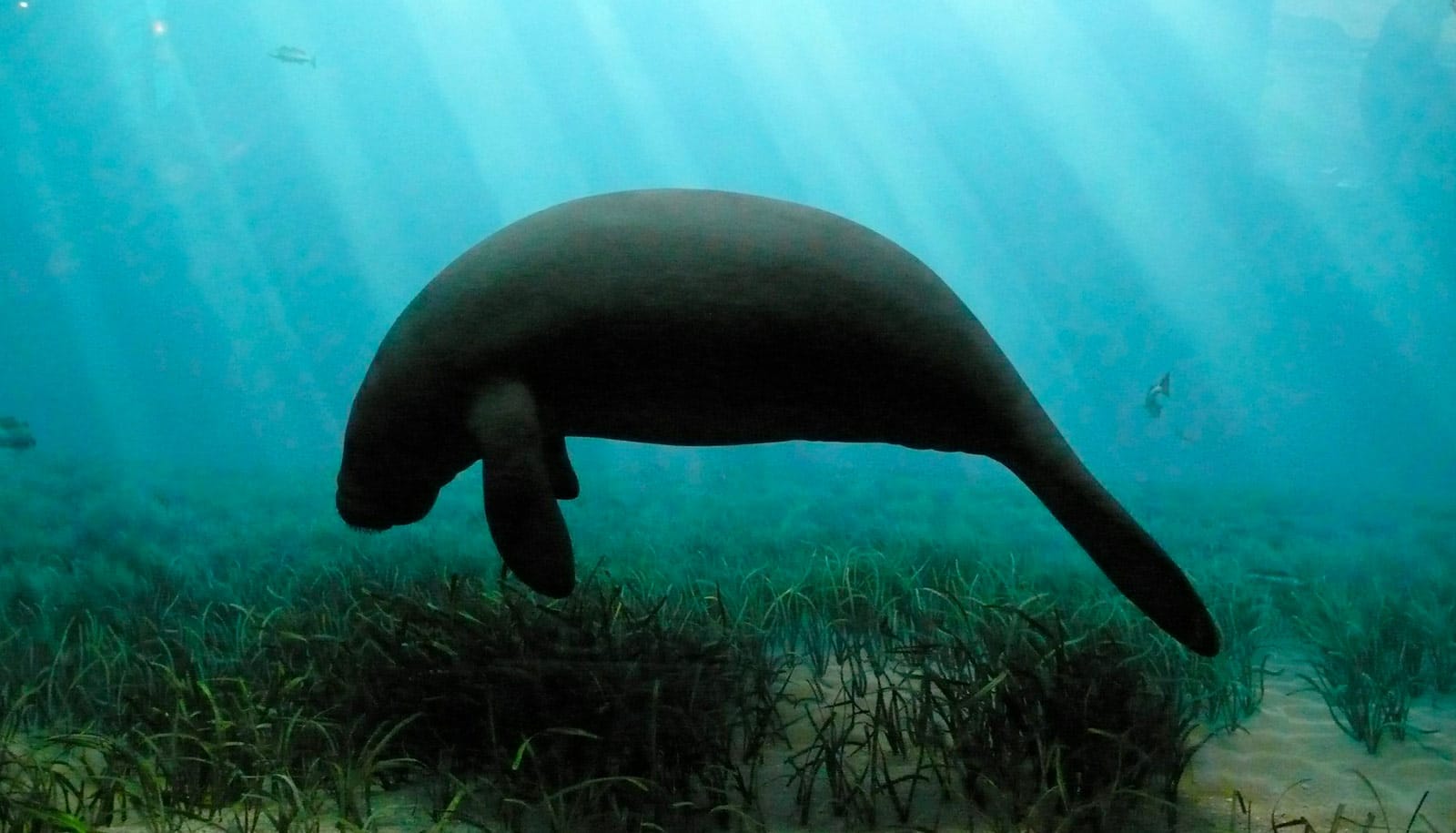Researchers have assembled the most complete story yet of the ancestry of manatees, which have over their long history lived along the coasts of every continent but Antarctica.
Zoologists refer to manatees and dugongs as “sea cows” but a simple internet search might return the more playful moniker “floaty potatoes.” Now, imagine a 24,000-pound version, twice the size of an elephant, swimming in the Bering Sea.
While only four species of the round, slow-moving aquatic herbivores of the order Sirenia remain on Earth—and all are considered vulnerable to extinction—fossil evidence suggests that many different kinds of sea cows lived in the past, and at times numerous species coexisted.
The new paper is published in PeerJ.
“The earliest known fossil sea cows are about 47 million years old, and those animals lived along the coasts of northern Africa in the proto-Mediterranean Sea,” says coauthor Steven Heritage of the Museum of Natural History at the Duke University Lemur Center.
“Our analysis found that this first appearance was about 11 million years after the sea cow lineage diverged from their closest living relatives, the elephants.”
The earliest fossil ancestors of elephants are also from northern Africa and lived during the early Cenozoic, the era that followed the extinction of the dinosaurs. While modern manatees and dugongs have no hind limbs and are strictly aquatic, the oldest known fossil sea cows had four limbs and could walk on land.

The study assembled the largest-yet dataset of living and fossil species, combining genetics, anatomy, geography, and geologic ages. The team’s analyses included time-scaled statistical models for the ancestry of sea cows and models of historical biogeography that identify the ages and directions of their migrations across Earth’s oceans.
“Our models suggest that the direct ancestors of manatees evolved within continental South America and the migration of manatees into the Caribbean and towards the coasts of North America was a relatively recent event, says Erik Seiffert of the Keck School of Medicine at the University of Southern California, who is also a research affiliate of the Duke Lemur Center and coauthor of the paper. “In a sense, manatees are newcomers to these West Atlantic ecosystems.”
For much of the past 20 million years, fresh water wetlands covered a large portion of northern South America. These eventually gave rise to the Amazon River system with drainage into the South Atlantic Ocean beginning only a few million years ago. Manatees from that vast marshland seem to have made their way out of South America after that time.
Around 34 million years ago, a key trans-Atlantic migration from the Eastern Hemisphere towards southern North America and the Caribbean gave rise to the common ancestor of the living sea cow species.
The age of that migration corresponds to the Eocene-Oligocene boundary, which was a time of plummeting global sea levels, a rapidly cooling climate, and widespread and severe extinctions of numerous animal species both on land and in the sea.
After that time, the ancestral sea cows of the Eastern Hemisphere faced a steep decline and eventually disappeared. But the Western Hemisphere lineage that was established near the beginning of the Oligocene gave rise to many species of sea cows that flourished and persisted for tens of millions of years, sometimes living in communities of multiple species.
The analysis also found that at least three Caribbean sea cow lineages migrated into the Pacific Ocean during the Miocene epoch, between 23 and 5 million years ago, before Central and South America were connected.
One descendant of those Pacific migrations was the gigantic Steller’s sea cow, a cold-adapted species that measured up to 33 feet. European naturalists who explored the islands of the Bering Sea during the mid-1700s observed living Steller’s sea cows, but the species was hunted to extinction shortly thereafter.
The researchers say the highest diversity of sea cow lineages occurred around 22 and 16 million years ago. But over the past 9 million years, the number of lineages has dropped precipitously resulting in the few species that remain today.
Source: Duke University

